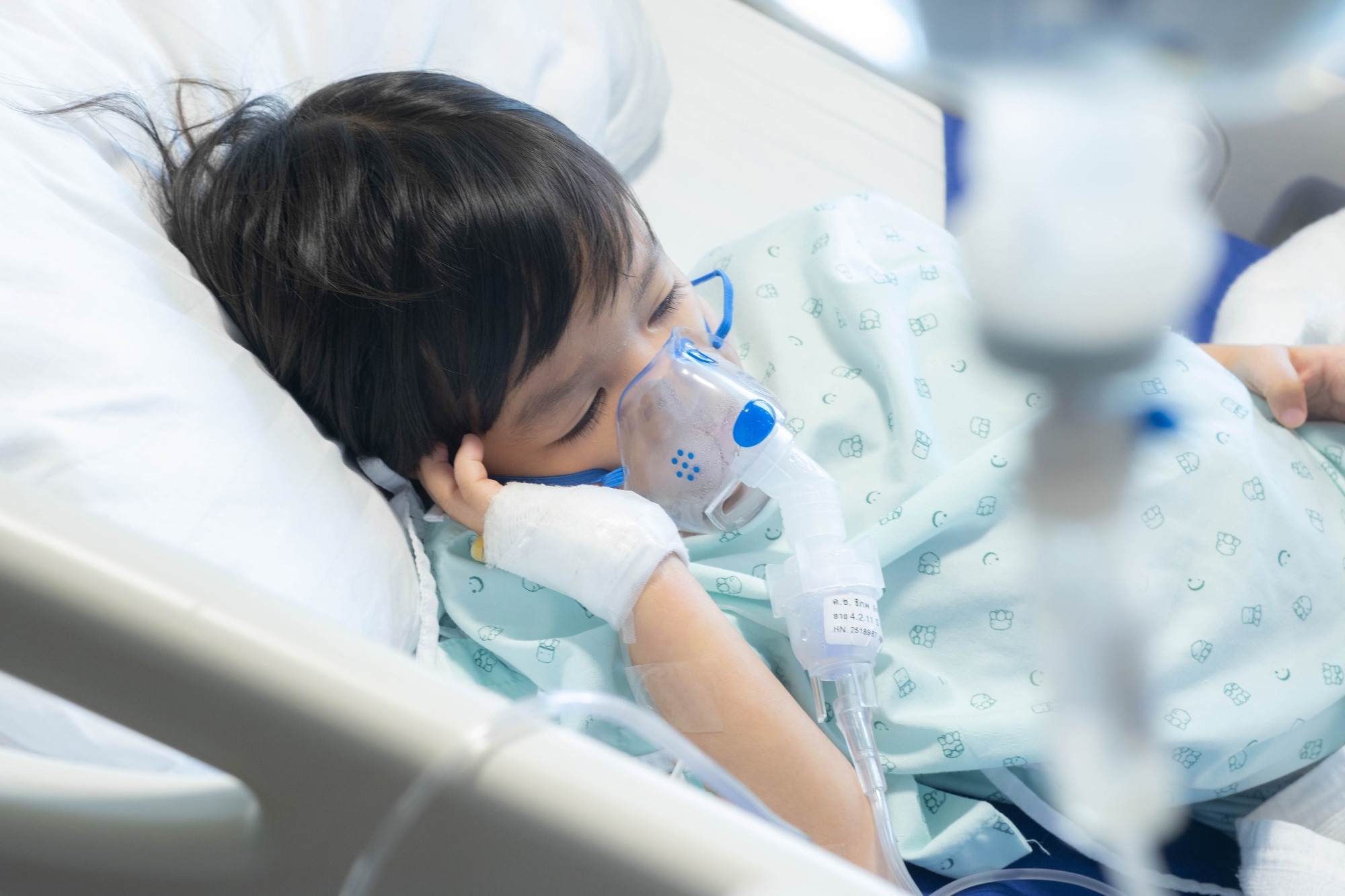Real-world data confirm that nirsevimab provides powerful protection for infants, reducing RSV hospital stays and easing the strain on families and healthcare systems.

Research letter: Nirsevimab Administration and RSV Hospitalization in the 2024-2025 Season. Image Credit: Bonn_A / Shutterstock
In a recent Research Letter published in the JAMA Network Open, a group of researchers estimated whether nirsevimab, a long-acting monoclonal antibody, lowers respiratory syncytial virus (RSV)-associated hospitalization among United States (US) infants during the 2024-2025 season using an extensive electronic health record (EHR) cohort.
Background
One virus fills winter pediatric wards: RSV is among the leading reasons infants land in the hospital, especially those born prematurely, with complex conditions, or from communities facing socioeconomic disadvantage. Public health agencies in the US recommend passive immunization of most infants with nirsevimab, but families still ask: does it truly translate to fewer hospital stays where we live? Real-world data matter because drug supply, maternal vaccination, and clinic access vary by place and season. Clinicians need precise numbers to guide counseling, and parents need confidence when choosing prevention before the first cough. Further research is required in order to examine outcomes across diverse health systems and subgroups.
About the study
The investigators performed a retrospective cohort analysis using the Epic Systems Cosmos dataset, an EHR aggregation platform that spans more than 300 million patients across over 1,700 hospitals and 40,000 clinics in all 50 states, as well as in Canada, Lebanon, and Saudi Arabia. The study included babies born between February 1, 2024, and January 31, 2025, ensuring at least two months of exposure to the 2024-2025 RSV season, which typically occurs from October 1, 2024, to March 31, 2025. Infants aged 8 to 19 months were excluded due to data granularity issues. The exposure was receipt of nirsevimab, the primary outcome was RSV-associated hospitalization, identified using validated International Classification of Diseases, Tenth Revision (ICD-10) algorithms.
The analysis excluded infants with missing maternal linkage, maternal RSV vaccination 14-280 days pre-delivery, with this exclusion consistent with CDC recommendations, prior nirsevimab before April 1, 2024, RSV hospitalization before April 1, 2024, death without hospitalization, or no well-child visits after September 30, 2025, to limit loss to follow-up. Group comparisons used two-sided Wilcoxon rank-sum tests for continuous variables and Pearson χ² tests for categorical variables. Daily hospitalization rates were modeled with generalized additive models (GAMs). Time-to-event analyses employed multistate Cox proportional hazards (Cox PH) models to transition infants from untreated to treated on the nirsevimab date, with adjustments for chronologic age, gestational age, Social Vulnerability Index (SVI), and complex chronic conditions (CCC: cardiovascular, respiratory, and neurologic). Analyses were performed in R (R Project for Statistical Computing) version 4.5.0.
Study results
Among 798,470 eligible births, 409,723 infants met inclusion criteria after exclusions for missing maternal information (n=256,494), maternal RSV vaccination (n=75,107), death (n=472), prior nirsevimab (n=11,946), prior RSV hospitalization (n=73), and lack of well-child follow-up after September 30, 2025 (n=44,655). The median (interquartile range) age at analysis was 8 (5-10) months, and 51.1% of the participants were male. Overall, 194,422 infants (47.5%) received nirsevimab, while 215,301 did not. Baseline table comparisons revealed small but statistically significant differences in several characteristics, including a slightly younger age among treated infants and a higher prevalence of cardiovascular and neurologic complex chronic conditions in the treated group. The median gestational age was similar at 39 weeks across groups. The median SVI was 67 (IQR, 38–87), with some missing values.
Nirsevimab receipt was associated with a markedly lower crude rate of RSV-associated hospitalization. Specifically, 850 of 194,422 treated infants (0.4%) were hospitalized compared with 2,535 of 215,301 untreated infants (1.2%), P<.001. Modeled daily hospitalization rates peaked at an estimated 2.90 (95% confidence interval [CI], 2.42-3.38) per 100,000 among treated infants versus 13.84 (95% CI, 13.16-14.53) per 100,000 among untreated infants during the season.
Time-to-event analyses yielded consistent effect estimates. In unadjusted Cox PH models, the hazard ratio (HR) for RSV-associated hospitalization after nirsevimab treatment was 0.29 (95% CI, 0.26-0.32). After adjusting for chronologic age, gestational age, SVI, and CCC categories (cardiovascular, respiratory, neurologic), the HR was 0.23 (95% CI, 0.21-0.26), indicating an approximately 77% lower instantaneous risk of hospitalization following treatment. Multistate modeling that transitioned infants from untreated to treated on the administration date supported the temporal relationship between exposure and outcome.
Secondary utilization outcomes followed the same direction. Intensive care unit (ICU) admissions attributed to RSV occurred in 324 treated infants (0.2%) versus 765 untreated infants (0.4%), P<.001. Intubation was rare but less frequent among treated infants (49 vs. 90, both <0.1%, P = 0.004). The seasonal figure further illustrates the rising cumulative coverage of nirsevimab across autumn and winter, alongside consistently lower modeled hospitalization rates in the treated cohort.
The researchers noted potential biases that could attenuate the observed effectiveness, including the incomplete capture of maternal RSV vaccination status and the possible receipt of nirsevimab outside contributing health systems, which would misclassify exposure and bias the results toward the null. Restricting to infants with documented well-child care during the season aimed to reduce loss to follow-up. Overall, the large sample and consistency with prior season estimates strengthen confidence in generalizability.
Conclusions
In a large, multi-system EHR cohort from the 2024-2025 RSV season, nirsevimab was associated with substantially fewer RSV-related hospitalizations in US infants, with adjusted HRs near 0.23 and lower ICU use. For families, this translates to fewer frightening hospital stays and less disruption to work and caregiving. For clinicians and health systems, it supports ongoing efforts to offer nirsevimab early in the season and equitably across communities, including infants with complex chronic conditions.
Journal reference:
- Pelletier, J. H., Rush, S. Z., Robinette, E., Maholtz, D. E., Bigham, M. T., Forbes, M. L., Shein, S. L., Karsies, T. J., & Horvat, C. M. (2025). Nirsevimab Administration and RSV Hospitalization in the 2024-2025 Season. JAMA Network Open. DOI:10.1001/jamanetworkopen.2025.33535, https://jamanetwork.com/journals/jamanetworkopen/fullarticle/2839288